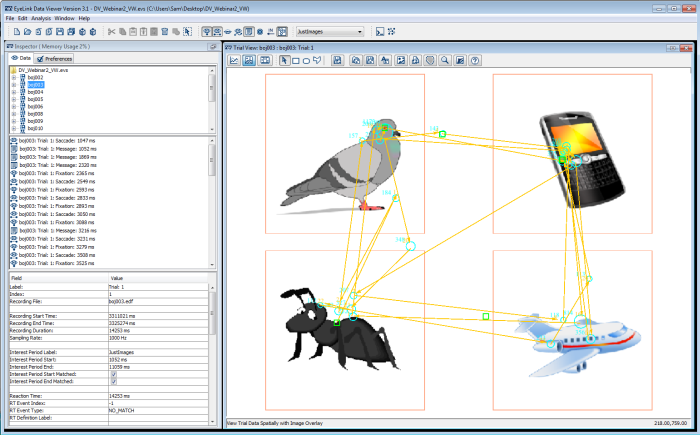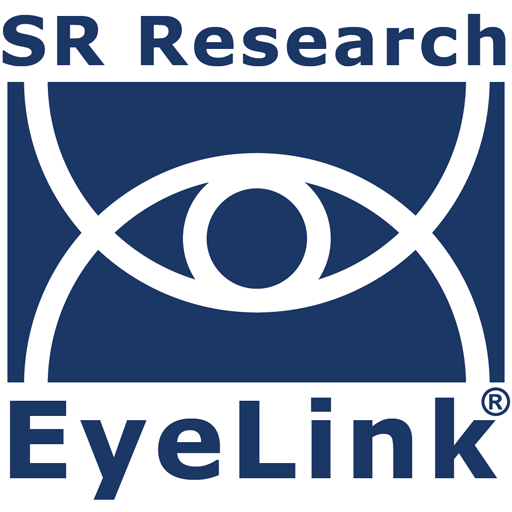Developmental Eye-Tracking Research Solutions
Researchers use the gaze patterns of infants, children, and elderly people to gain insights into a range of developmental processes. EyeLink eye trackers are easy to operate with high sampling rates, outstanding spatial accuracy, and fast recovery times. Our eye trackers are used in developmental research laboratories across the world.

If you would like to find out how our eye-tracking hardware and software can help your developmental research, get in touch, and we will get back to you!
Eye-Tracking Hardware Solutions for Development Research
Both the EyeLink 1000 Plus and EyeLink Portable Duo have outstanding spatial accuracy and high levels of precision, making them perfect tools for developmental research. The EyeLink 1000 Plus is a highly flexible solution – for example, when combined with an Arm Mount (see above), infants can be tracked while positioned comfortably on a parent’s lap. The Desktop Mount is perfect for toddlers and children, or for experiments needing large display screens. The EyeLink 1000 Plus can also be synchronized with other recording equipment such as EEG and fNIRs. The EyeLink Portable Duo is easily transportable, can be set up in minutes, and is ideal for research with toddlers and up.


Both the EyeLink 1000 Plus and EyeLink Portable Duo have the following features that make them perfect for developmental research:
- Outstanding Spatial Accuracy: Average accuracy across the calibrated area of the screen is between 0.25-0.5 degrees, which minimizes ambiguity in your developmental research.
- High Sampling Rates: Combined with low noise levels, the high sampling rates of EyeLink systems allow very precise fixation durations to be determined, ensuring that even the smallest differences in dwell times across conditions can be detected.
- Fast Real-Time Access to Eye Position: Rapid access to eye position (< 2ms at 1000 Hz) allows developmental researchers to implement powerful gaze-contingent tasks – including gaze-triggered trial onsets, accumulated looking tasks, and much more.
- Head-Free and Head-Fixed Modes: Both systems can be used with or without a chin-rest.
Software Solutions for Developmental Research
Stimulus Presentation
SR Research Experiment Builder is a powerful but easy-to-use graphical programming environment for creating EyeLink eye-tracking and non-eye tracking experiments. Experiment Builder delivers complex visual and auditory stimuli and registers responses with extremely high levels of timing precision. It supports animated calibration targets to grab an infant’s attention and ensure proper calibration:
Experiment Builder has many other features that make it perfect for developmental research:
- Animations: Easily create simple animations using custom movement patterns.
- Gaze-Contingent Triggers: Ensure that trials start when the infant is ready, and launch gaze-contingent attention getters to keep the infant engaged and on-task.
- Templates: Choose from hundreds of existing templates, including many common infant / developmental tasks such as Habituation, Preferential Looking, Anticipatory Looking, Accumulated Gaze, and many more.
Eye-tracking functionality can also be easily added to existing experimental scripts written in a wide range of third-party software solutions, including E-Prime, Presentation, MATLAB and Psychtoolbox, PsychoPy, and OpenSesame.

Data Analysis
EyeLink Data Viewer is a powerful data analysis software package used to process eye gaze data recorded with EyeLink eye trackers. Data Viewer allows eye-tracking data to be visualized (for example, by creating spatial overlays of the looking behavior), filtered, grouped, and analyzed.

Data Viewer makes the data analysis process very straightforward for developmental researchers. Here are just a few things you can do:
- Data Visualization: View data in a temporal graph, spatial overlay, or dynamic playback modes; create static and dynamic heatmaps at the group or trial level; color code event data at the group or participant level.
- Reports: Output reports containing hundreds of gaze variables at the Trial, Interest Area, Fixation, Saccade, and even Sample level.
- Filter / Clean Data: Adjust, remove, or merge individual fixations and saccades.
EyeLink Data Files can also be read directly into MATLAB or converted to ASCII for import into a wide range of other software packages for further analysis.
EyeLink Developmental Research Publications
There are over 13,000 EyeLink publications in peer-reviewed journals and over 900 EyeLink developmental publications. Click the buttons below for searchable lists of EyeLink research papers:
